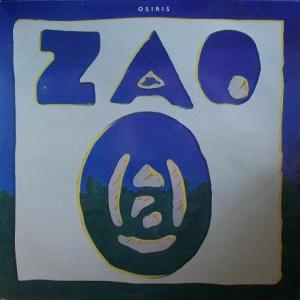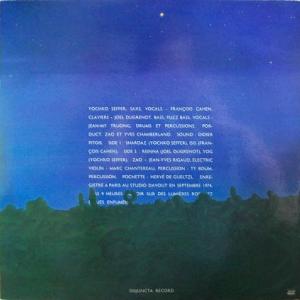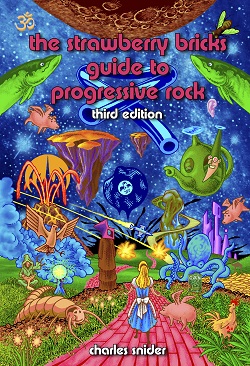Osiris
by Zao


Artist:
ZAO
Label:
Disjuncta
Catalog#:
000004
Format:
Vinyl
Country:
France
Released:
1974
| Tracklist | |||
| A1 | Shardaz | ||
| Notes: |
Written-By - Jeff Seffer |
||
| A2 | Isis | ||
| Notes: |
Written-By - François Cahen |
||
| B1 | Reinna | ||
| Notes: |
Written-By - Joël Dugrenot |
||
| B2 | Yog | ||
| Notes: |
Written-By - Jeff Seffer |
||
| B3 | La Rhune | ||
| Notes: |
Written-By - François Cahen |
||
Credits
Bass, Bass [Fuzz], Vocals - Joël Dugrenot
Drums, Percussion, Vocals - Jean-My Truong
Keyboards - François Cahen
Painting [Cover Painting] - Hervé De Gueltzl
Percussion - Marc Chantereau
Percussion - Pierre Guignon
Producer - Yves Chamberland
Producer - Zao
Saxophone, Vocals - Jeff Seffer
Violin [Electric] - Jean-Yves Rigaud
Violin [Electric] - Zao
Notes
Recorded at Davout Studio, September 1974
Strawberry Bricks Entry:
With Christian Vander’s usurpation of Magma, pianist François “Faton” Cahen and saxophonist Yochk’o “Jeff” Seffer split to form Zao. They recruited two topflight players from the Paris jazz scene: drummer Jean-My Truong and bassist Joël Dugrenot, along with Jean-Yves Rigaud on violin. Their debut album, Z=7L, was recorded at Strawberry Studios and saw release on the Vertigo label in France. As one would expect, it furthers the “zeuhl” of Magma, but with a catch: If Magma had Klaus Blasquiz providing unique vocals, Zao parlayed this histrionic approach with Mauricia Platon. Mostly a lead instrument, her scat stylings are completely over the top-to the point of obscuring an otherwise amazing fusion record. It didn’t last. Their second album, Osiris, saw release on the Richard Pinhas’s Disjuncta label and does without Platon’s lead voice. A bit darker than its predecessor, the album still has a few vocal acrobatics (from Dugrenot), just witness the opening “Shardaz.” A Zao archetype, unison playing and sharp start/stops highlight the band’s ensemble performance. “Isis” opens playfully, then rides Cahen’s electric piano, shifting moods from fierce to fun, while always swinging with precision. “Reinna” and “Yog” invoke zeuhl of the highest order, the latter punctuated by Truong’s meter accompanied by percussionists. “La Rhune” repeats its brooding motif ...until the end of the song. Now signed to RCA, change struck with the arrival of bassist Gérard Prévost and the addition of an all-female string quartet, Quatuor Margand, on Zao’s 1975 album Shekina. Musically, Seffer and Cahen’s “zeuhl” would take a backseat to a more rhythmically complex fusion. Next, ex-Magma violinist Didier Lockwood joined the band, contributing to the album Kawana. It was a high point for the Zao, even seeing release in the US on the Peters International Cosmos label. But the inevitable happened: Seffer then left the band to work further with Quatuor Margand, Truong and Lockwood formed Surya, and Cahen was left with Zao. He issued one final album, Typhareth, in 1977. While only Prévost carried over, it does contain the earliest recordings from Manu Katché, who would later drum for Peter Gabriel. Cahen would later work with Gong’s Didier Malherbe in Faton Bloom. Seffer would continue his fusion of jazz, ethnic and classical music, issuing his Chromophonie series in the early 80s.

